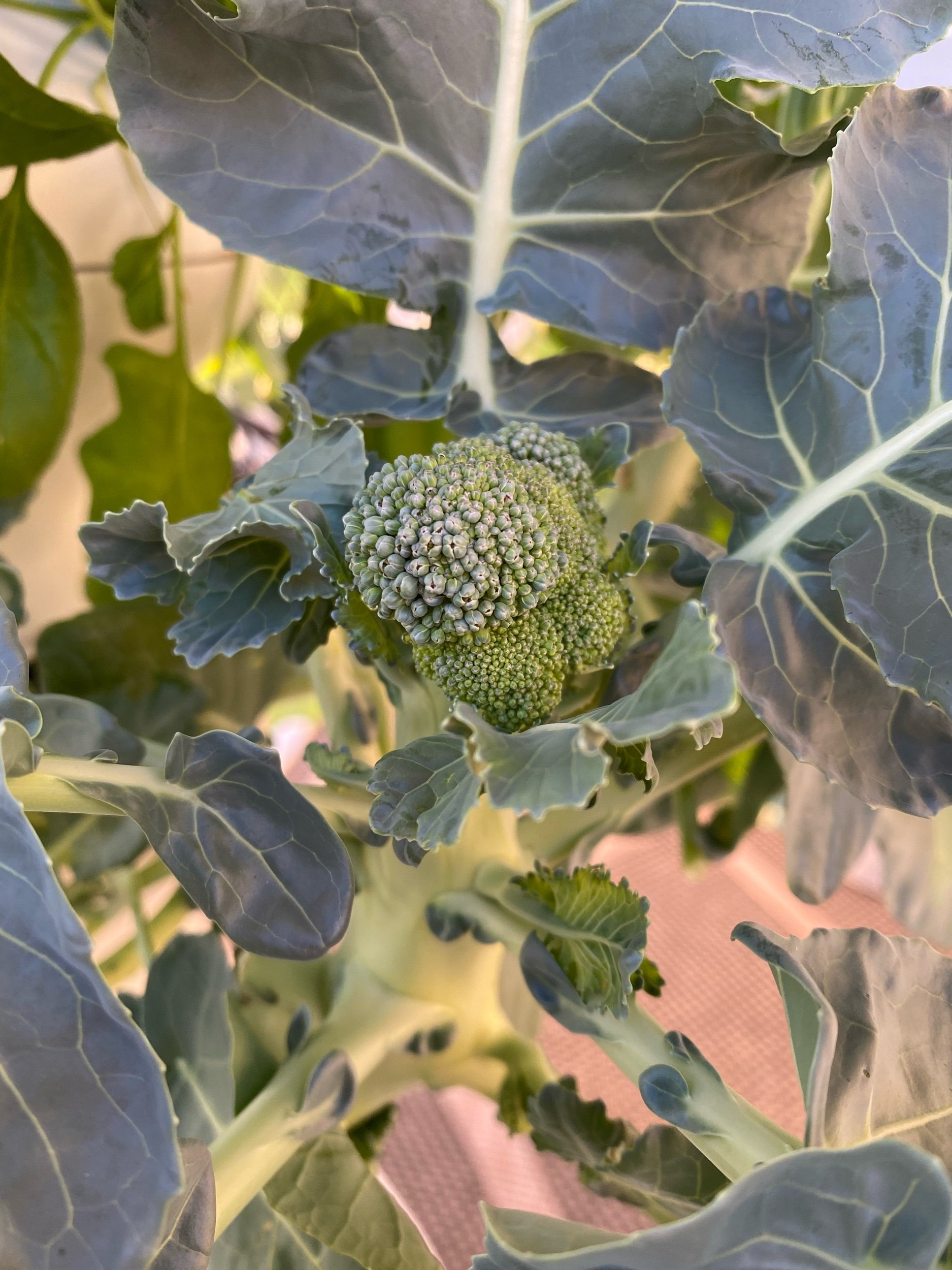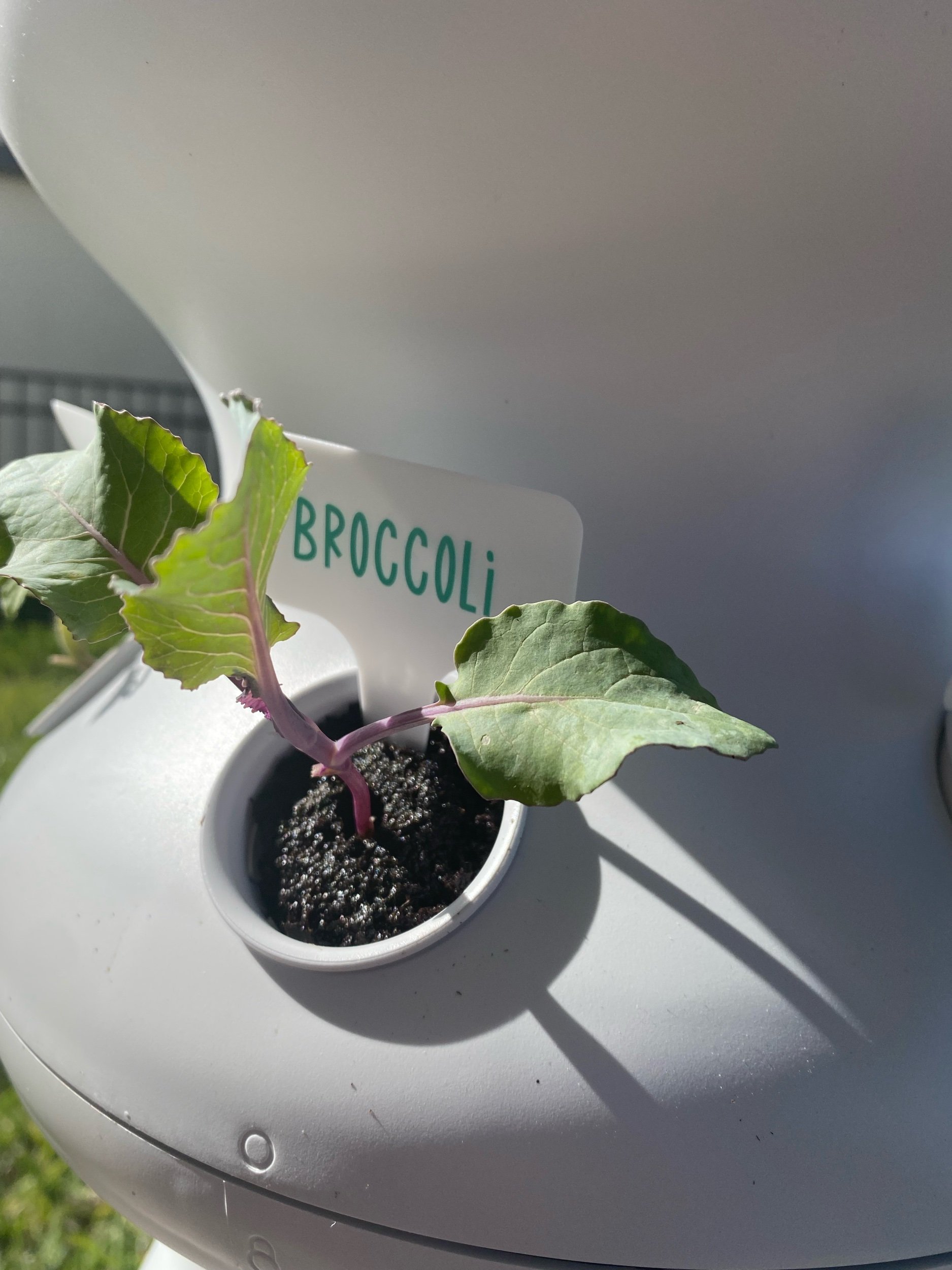Starting a Hydroponic Garden
In the spring of 2022, we purchased the LettuceGrow Farm Stand and began our journey with hydroponic gardening. We had previously tried nurturing our own vegetable gardens in raised planters, as well as in containers. Our schedule is crazy, so I am not the best at sticking with a strict watering schedule. I thought the self-watering element of hydroponic gardening would serve us well, and I wasn’t wrong.
Purchasing the Hydroponic Tower
We went with LettuceGrow for a few reasons.
We liked the sleek, vertical design of their tower (we also knew our neighbors would, too - and therefore, so would our HOA).
I liked the expandability of the tower. Different levels can be added to accomodate anywhere from 12 - 36 plants.
The design of the tower itself was very eco-friendly. It’s made from recycled plastic and the closed loop system means it saves on water consumption and costs, too.
There’s an app to help with reminders, and
The nutrients and knowledge needed to get started was simplified.
Lastly, I appreciated the giveback program their company has. I even got a tower donated to my school. Our VPK program uses it and they love it!
We originally purchased the 24 plant tower and later added the two levels expanding our tower to the full 36 plant capacity. The company sometimes run promotions for extension levels with the purchase of their seedlings, which is what we waited for before expanding.
We ordered the stand and used a promo code to get the seedlings for free. Our original order included the ironman kale mix, spinach, astro arugula, baby lettuce mix, dwarf cherry tomatoes, romaine, classic butter lettuce, broccoli and cauliflower.
Setting up the Tower
After the stand and the plants were delivered, we used the video in the app to set up the tower. The app also automatically adds the plants you order into the “My Farm” page, which provides recommendations on which levels to put each plant, and when they might be ready for harvesting.
The seedlings themselves are planted in a special medium that can be placed right into the cups. A submersible pump and PVC pipes take the water and nutrients from the tank and distribute it evenly throughout the tower and onto the plants’ roots.
The system also comes with a timer and a guide for how to set the timer based on time of year and average daily temperatures. The book also tells you exactly how many scoops of the nutrients (Part A and Part B) to dissolve in the water before plugging it in and getting it going.
We immediately fell in love with the sound of the running water. It is so relaxing.
There is also a LettuceGrow Facebook group that we found both helpful and inspiring.
Harvesting Our Veggies
Starting from the seedlings meant the vegetables were ready to be harvested sooner than if we started from seed. We began by harvesting the outer leaves of the lettuces first. New leaves continued to grow in the center of each plant. Eventually, the plants were completely removed, especially when they bolted (i.e., flowered or seeded). Some of those seeds did fall into a potted plant and sprouted.
Now, we’re at the point where we wait for all the leaves to get to a decent size and then harvest the plant in its entirety.
We’ve also gotten to the point where we no longer order the seedlings through LettuceGrow (mostly due to cost and because we were starting to notice 25% - 40% of the plants we were receiving weren’t making it). Starting from seeds means it takes a little longer before our next harvest and the app can’t help us predict harvesting times, but it’s been fun trying different seeds and we didn’t find the harvest schedule too accurate to begin with.
Starting from Seeds
Since the seedlings came with their own medium, starting our plants from seeds meant finding a medium to fill the cups. Some of the growers in the Facebook group recommended the Root Riot Starter Cubes and now it is our recommendation, too. The cubes fit into the cups nicely. I do use a straw to make the holes a little wider and then place 2 - 3 seeds in each hole. I like to keep my levels homogenous. Currently, since it is colder outside and lettuces like the cooler weather, I have a different type of lettuce in each level of our tower.
When it warms up, I’ll plant some tomatoes and basil.
What Grows Well (and Doesn’t)
Lettuces work well in the tower. My favorites are arugula, spinach, romaine, kale and butter lettuce. I usually have at least 3 of these in the tower at any given time.
Plants with large leaves (like any squash - zucchini, cucumbers, pumpkins), broccoli and cauliflower took a really long time to grow and eventually overshadowed and killed everything else nearby in the tower.
Green beans and tomatoes grow nicely in the tower. I like to place the tomatoes on the top level and tie the plants together like an afro on top of the tower. This worked well until the water level in the tank dropped too low and an afternoon spring storm knocked the whole tower over.
Other Issues
Since we have our tower on a back, open patio and it is too heavy to roll on its cart over the grass, the two hurricanes we got this past fall necessitated taking the tower apart level by level and storing the plants in our garage. The good news is that it served as a reset for the tank and nutrients. The bad news was that it was a ton of work.
Also before the hurricanes, we had our tower in the outer corner of our covered lanai. This meant it got both morning and afternoon sun. Since the spinach and strawberries seemed to like the shaded side (and I really want to successfully grow strawberries), when we put our patio back together after the storm, I moved the tower against the house. It’s been too cold to try strawberries again, but the lettuces (especially the spinach and kale) seem to like the move.

































